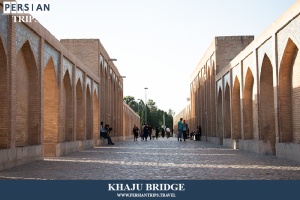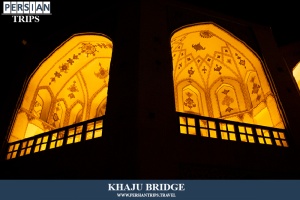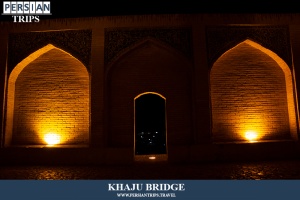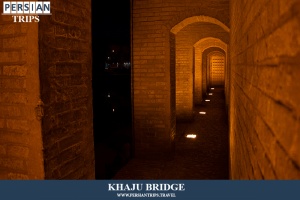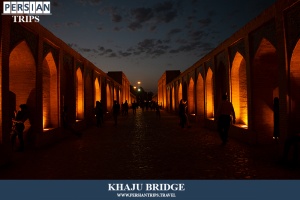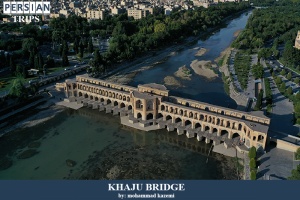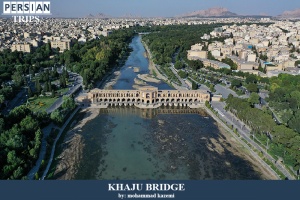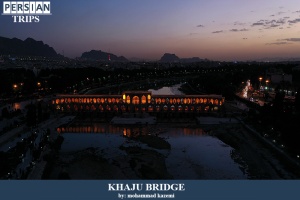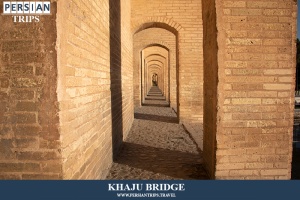Khaju Bridge
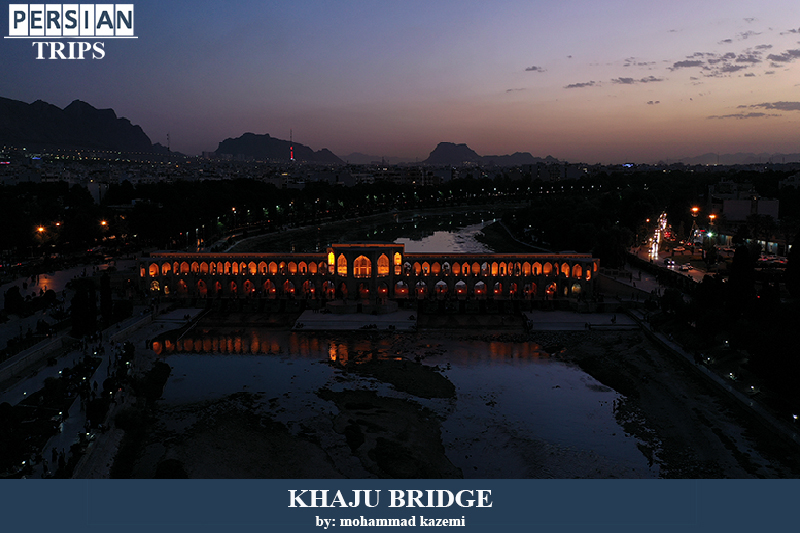
Khaju Bridge, one of the most beautiful historical monuments in Iran during Safavid dynasty, was built over Zayandehrud River in Isfahan by the decree of Shah Abbas II.
This bridge is located in the eastern part of Si-o-se-pol Bridge on Zayandehrud River, which is another historical monument of Isfahan. According to archaeologists, Khajoo Bridge was built on the remains of a formerly-destroyed bridge, which was known as Hassan Beyg during the reign of Shah Abbas I. The reason why this bridge is called Khajoo is its location in Khaju district of Isfahan. It should also be noted that Khaju is rooted from the word Khajeh, due to the respect for Khajehs of the Safavid era. Other names of Khaju Bridge are Shah (the king) Bridge, Baba roknuddin, Hassanabad, Shahi and Shiraz. According to researches done by historians, the purpose of Shah Abbas II in building this bridge was to establish a connection between Khaju district with Takht-e-Foolad and Shiraz Road. Interestingly, the family of Shah had unique moments in the building, which was considered a temporary residence, built in the middle of the bridge. In the east and west part of the bridge, we see a building decorated with paintings where kings and courtiers watched swimming and boating competitions.
The architecture, tiling and painting style of Khaju Bridge make it a global masterpiece that attracts the attention of all viewers. Khaju Bridge is 133 meters wide and 12 meters broad, connected to Zayandehrud River by 11 stairs on one side; people enjoy a refreshing atmosphere by sitting on these stairs. The bridge has 24 spans and two stone lion statues on its eastern side. According to scholars, these two lions, which were made during the Safavid dynasty, were the symbol of Bakhtiari troops in Isfahan. Isfahan Khaju Bridge is a type of dam bridge. According to some architects, it is the masterpiece of the bridge construction industry in Iran; this dam bridge is engineered in a way that it can raise the water level to a height of 6 meters. This bridge can regulate the river flow by some sluice gates. By moving the sluice gates up and down, they would be able to adjust the amount of flowing water, so it was completely possible to adjust the water collected behind the dam bridge.
Tags: Isfahan Province, Isfahan Attractions, Iran Historical Attractions, Historical Bridges in Iran, Khaju Bridge
